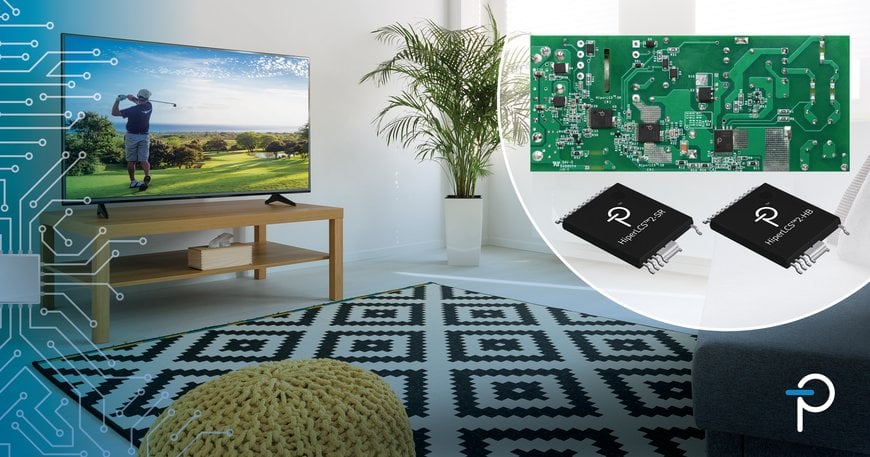electronics-journal.com
24
'22
Written on Modified on
Power Integrations’ HiperLCS-2 Chipset Boosts LLC Converter Efficiency, Slashes Component Count by 40 Percent
Surface-mount LLC chipset delivers 250 W with over 98 percent efficiency and no heatsink; no-load consumption is less than 50 mW.

Power Integrations (Nasdaq: POWI), the leader in high-voltage integrated circuits for energy-efficient power conversion, today announced the energy-saving HiperLCSTM-2 chipset, a new IC family that dramatically simplifies the design and manufacture of LLC resonant power converters. The new dual-chip solution features an isolation device with a high-bandwidth LLC controller, synchronous rectification driver and FluxLinkTM isolated control link, alongside a separate half-bridge power device utilizing Power Integrations’ unique 600 V FREDFETs with lossless current sensing and high- and low-side drivers. Both devices are housed in low-profile InSOPTM-24 packages. This highly integrated, energy-efficient architecture eliminates heatsinks and reduces component count by up to 40 percent compared to discrete designs.
Edward Ong, senior product marketing manager at Power Integrations said: "Resonant converters using separate controllers and discrete MOSFETs can be incredibly bulky and are notoriously difficult to manufacture due to their complexity and high component count. We have applied our advanced FREDFETs and magneto-inductive FluxLink technology to the LLC topology, yielding 98 percent efficiency and reducing component count by 40 percent, while eliminating bulky heatsinks and unreliable optocouplers. This enables designers to create compact adapters and open-frame power supplies for TVs, monitors with USB PD ports, all-in-one PCs, game consoles and battery chargers for power tools and e-bikes.”
Resonant converters are typically used wherever an application demands a level of efficiency unachievable with single-switch topologies such as flyback converters. The HiperLCS-2 chipset leverages Power Integrations’ high-speed FluxLink feedback mechanism to avoid the compromises normally associated with the LLC topology, permitting designers to quickly and consistently implement designs with high performance, wide operating range and low component count.
Power supply designs based on the new HiperLCS-2 can achieve no-load input power of less than 50 mW at 400 VDC input and provide a continuously regulated output, easily complying with the world's most stringent no-load and standby efficiency regulations. HiperLCS-2 devices operate at high efficiency across the load range with dissipation so low that direct heat transfer through the FR4 PCB is all that is required, eliminating heatsinks in adapter designs up to 220 W continuous output with up to 170 percent peak power capability. All HiperLCS-2 family members feature self-powered start-up and provide the start-up bias for a PFC stage using the company’s HiperPFSTM ICs. Secondary-side sensing provides less than one percent regulation accuracy across line and load range and across production variations. The use of Power Integrations’ FluxLink technology for safety-isolated high-speed digital feedback control provides much faster transient response and far superior long-term reliability compared to optocouplers.
www.power.com

